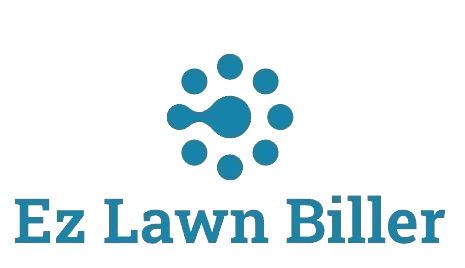Avoiding common optimization route mistakes can save you time and enhance your workflow efficiency. Learn how to streamline your processes effectively.
Avoid These Common Optimize Routes Mistakes
When it comes to enhancing operational efficiency, avoiding common optimization route mistakes is crucial for businesses across various sectors, including lawn care. Optimization in route planning can significantly save time and reduce operational costs. This blog post will delve into prevalent pitfalls that businesses encounter during route optimization and provide actionable insights on how to sidestep them. By understanding these common mistakes, you can implement effective strategies that boost productivity and streamline your operations.
In today’s fast-paced business environment, efficiency is paramount. Organizations, especially those relying on logistics and field services, must optimize their routes to ensure timely service delivery. However, in the quest for optimization, it’s easy to make mistakes that can lead to inefficiencies and increased costs. This article will explore typical mistakes in route optimization, providing examples and practical solutions to help you navigate the complexities of route planning.
1. Overlooking the Importance of Data Analysis
One of the most significant mistakes businesses make in route optimization is neglecting thorough data analysis. Without a clear understanding of your current routes, traffic patterns, and customer locations, any optimization efforts may be misguided.
Data-driven decisions can significantly enhance route efficiency. For example, analyzing historical traffic data helps determine peak hours, allowing companies to avoid congested routes. Additionally, evaluating client locations and service histories can lead to more logical routing, minimizing travel time and fuel expenses.
Consider a lawn care business that services multiple neighborhoods. By analyzing past service data, you can identify clusters of clients that are geographically close. This insight allows for more efficient route planning, ultimately saving time and reducing operational costs. Utilizing robust lawn billing software can assist in gathering and analyzing this vital data efficiently.
2. Failing to Use Technology Effectively
In an era where technology can revolutionize operations, many businesses still rely on outdated methods for route planning. Failing to leverage modern technology is a crucial mistake that can hinder optimization efforts.
Route optimization software or apps are invaluable tools that can help businesses significantly improve their routing efficiency. These tools can analyze various factors, such as distance, traffic conditions, and customer preferences, to suggest the most efficient routes. For instance, a lawn service app can automate route planning for lawn care technicians, ensuring they reach their clients promptly and reduce travel time between appointments.
Investing in a lawn service computer program can not only save time but also enhance client satisfaction. With automated scheduling and optimized routing, lawn care businesses can deliver timely services, leading to happier clients and better retention rates.
3. Ignoring Real-Time Traffic Conditions
Another common mistake in route optimization is overlooking real-time traffic conditions. Traffic can be unpredictable, and routes that seem optimal based on historical data may not hold up in real-time scenarios.
Incorporating real-time traffic data into your routing decisions is essential. Many modern routing applications provide live traffic updates, allowing you to adjust routes on the fly to avoid delays. For example, if a lawn technician is scheduled to service a residential area, real-time traffic updates can suggest alternate routes that may save valuable time.
By integrating real-time traffic information, lawn care businesses can improve their service efficiency and ensure they meet customer expectations consistently. This proactive approach directly reflects better on your business image and can positively influence your reputation within the community.
4. Neglecting Client Preferences
In the pursuit of optimization, some businesses forget to consider client preferences and needs. Ignoring these factors can lead to client dissatisfaction and ultimately affect customer retention.
It’s essential to communicate with your clients regarding their preferred service times and any specific requests they may have. For instance, some clients may prefer morning appointments due to their schedules, while others might request specific days for service. Incorporating these preferences into your route planning can enhance client satisfaction.
Using a lawn company app that allows clients to input their preferences can streamline this process. This way, you can optimize routes while also providing a service that aligns with your clients’ needs, creating a win-win situation for everyone involved.
5. Underestimating the Value of Feedback
Obtaining feedback from team members and clients is invaluable in the route optimization process. Failing to solicit and analyze feedback can lead to recurring mistakes and missed opportunities for improvement.
Your employees, especially those who are on the front lines, can provide insights that data alone may not reveal. For example, lawn care technicians can share experiences about route challenges or suggest improvements based on their day-to-day operations. Regularly reviewing both client feedback and technician insights can highlight areas for adjustment, ensuring that your optimization strategies remain effective.
Establishing a mechanism for collecting feedback—be it through surveys or informal check-ins—can help create a culture of continuous improvement in your organization. Furthermore, acting on this feedback can enhance overall efficiency and client satisfaction.
6. Not Considering Seasonal Changes
Seasonal changes can profoundly affect route optimization. Many businesses overlook the impact of these variations, leading to inefficiencies during peak seasons or off-peak times.
For lawn care companies, seasonality means that services offered, such as mowing in summer or fertilization in spring, can influence client demand and service frequency. Adjusting routing strategies based on seasonal trends is crucial for maintaining efficiency.
Utilizing a lawn company computer program that takes seasonality into account can aid in forecasting service demands effectively. This way, businesses can preemptively plan routes that align with peak service times, ensuring optimal resource allocation and maximizing productivity.
7. Overcomplicating Routes
While it might seem that adding more stops to a route enhances efficiency, overcomplicating routes can actually lead to increased travel time and higher operational costs. Simplicity often trumps complexity when it comes to route optimization.
Focus on creating routes that are straightforward and manageable. Avoid cramming too many stops into a single route, as this can lead to delays and inefficiencies. For instance, a lawn service provider should prioritize efficiency over volume when scheduling client appointments, ensuring each technician has a route that is both logical and achievable.
By utilizing effective lawn billing software, you can automate the scheduling process to create simpler routes that still cover all necessary appointments without overwhelming your team. This approach can significantly improve service delivery timelines and reduce employee stress, ultimately benefiting your business in the long run.
8. Focusing Solely on Cost Reduction
While cost reduction is an important aspect of route optimization, concentrating only on cutting costs can lead to poor service quality. It’s essential to strike a balance between efficiency and maintaining high service standards.
For lawn care businesses, this means ensuring that while routes are optimized for cost savings, the quality of service provided to clients remains uncompromised. Clients expect timely and professional service, and cutting corners to save money can damage your reputation.
Instead of focusing solely on cost, consider the long-term value of maintaining high service quality. This approach not only fosters client loyalty but can also lead to referrals, ultimately benefiting your business financially.
Conclusion
In conclusion, avoiding common optimization route mistakes is crucial for any business aiming to enhance efficiency and improve service delivery. From data analysis to client communication, understanding these pitfalls allows for more strategic planning and execution.
By leveraging technology, gathering feedback, and considering client preferences, businesses can create streamlined processes that prioritize both efficiency and service quality. Furthermore, maintaining a balanced approach to cost and service delivery will ensure long-term success in competitive markets.
As you refine your route optimization strategies, consider utilizing effective tools like lawn service software and lawn company apps to enhance your operations. By implementing best practices and avoiding common mistakes, you can achieve significant improvements in your business performance.




